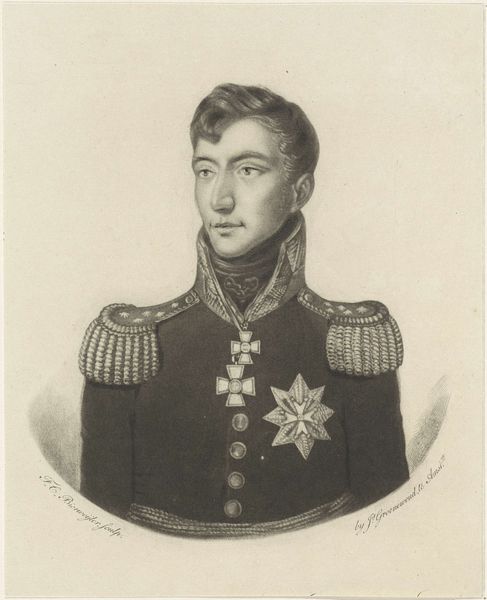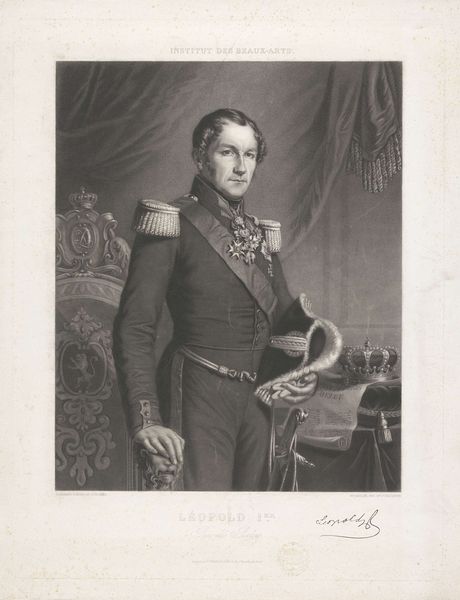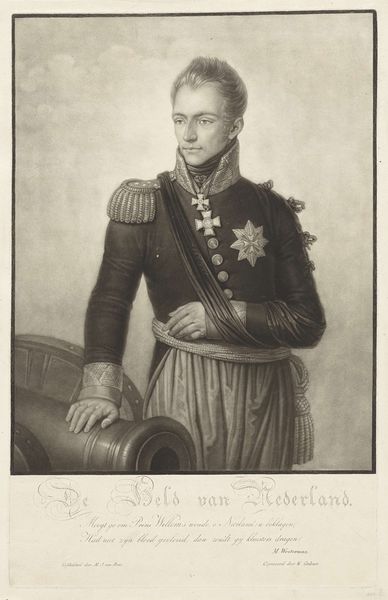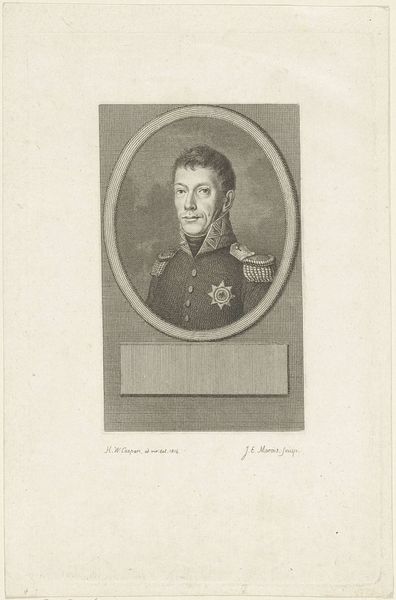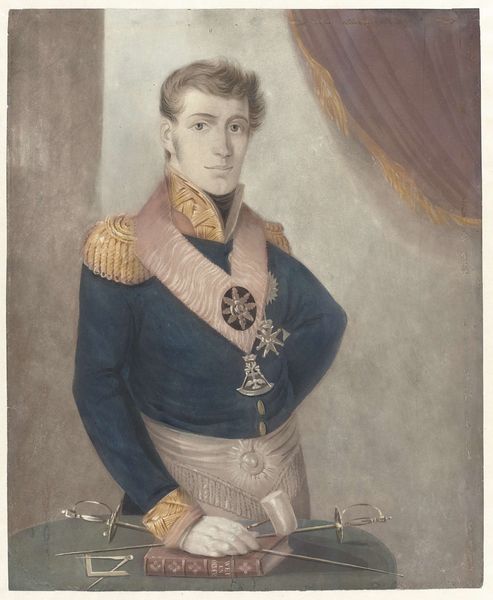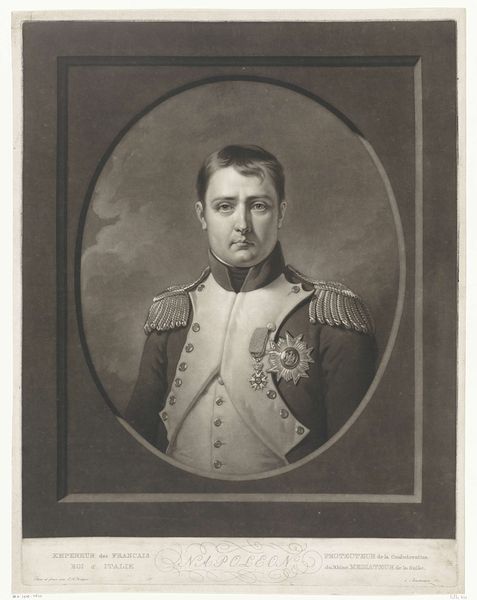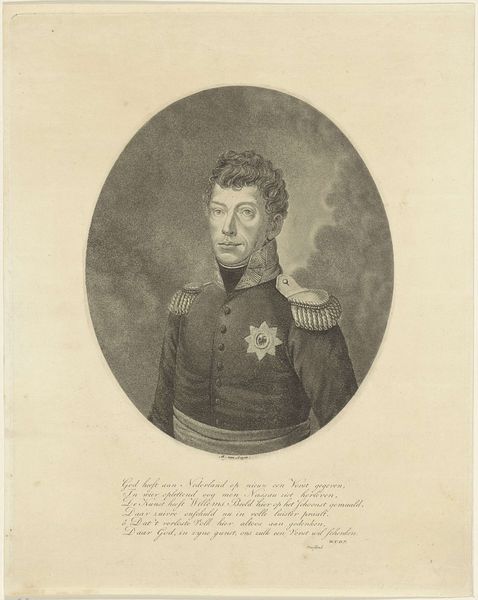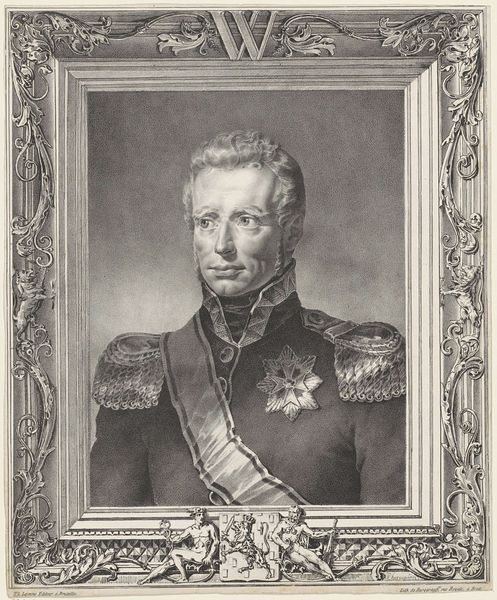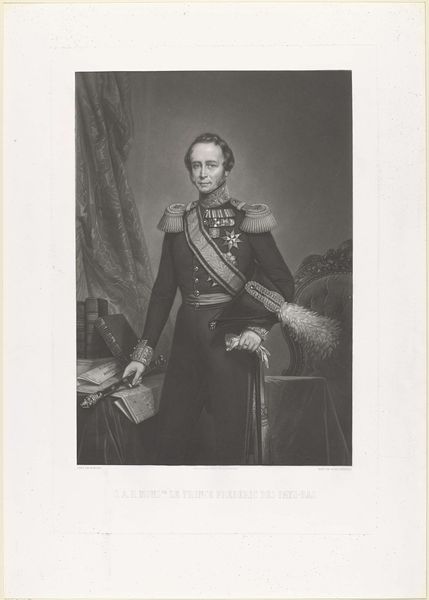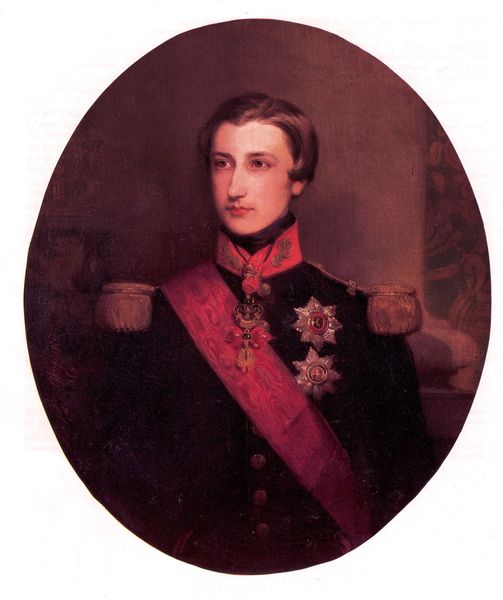
drawing, pencil
#
portrait
#
drawing
#
charcoal drawing
#
historical photography
#
portrait reference
#
pencil drawing
#
pencil
#
19th century
#
line
#
portrait drawing
#
history-painting
#
academic-art
#
realism
Dimensions: height 560 mm, width 385 mm
Copyright: Rijks Museum: Open Domain
Editor: Looking at Charles Howard Hodges' "Portrait of Frederik, Prince of the Netherlands," dating from between 1816 and 1837 and rendered in pencil, I'm immediately struck by its formal, almost imposing feel. He seems to want to communicate not just his likeness, but also his authority. How would you interpret the significance of such a deliberate portrayal? Curator: The context here is crucial. Think about the early 19th century: the Netherlands had just emerged from Napoleonic rule and was solidifying its monarchy. A portrait like this isn’t simply about individual likeness; it's about constructing and projecting the image of the Dutch state itself. The prince's military attire, the symbols of power surrounding him... they're all carefully curated to convey legitimacy and strength. Do you see how the artist uses specific details to create this effect? Editor: Absolutely. The details, like the book under his hand and the Masonic mallet, alongside what looks like fencing swords, must carry symbolic weight, pointing to aspects of his character beyond just royal power. Curator: Exactly. Hodges is embedding Prince Frederik within a network of institutions: the military, intellectual life through the book, potentially Freemasonry, suggesting an enlightened leader. But also consider the audience for this image. How would prints of this drawing have circulated, and what role would they have played in shaping public perception of the monarchy? Editor: So it's less about capturing a person, and more about constructing a persona suitable for national consumption? I suppose that makes sense, given that portraits like these were vital propaganda tools. It changes the way you see the image, not just as an artwork, but as a strategic communication. Curator: Precisely. By understanding the socio-political environment and the mechanics of image dissemination, we can appreciate the multifaceted nature of even seemingly straightforward portraiture. This was truly eye opening. Editor: It gives you a new respect for the artists working in this time. Thanks!
Comments
No comments
Be the first to comment and join the conversation on the ultimate creative platform.
